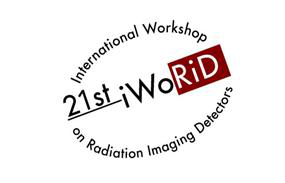Several applications in particle physics, high-energy astrophysics or medical imaging require the detection of nanosecond pulses, typically performed with photomultiplier tubes or silicon photomultipliers (SiPMs). SiPMs offer several benefits, such as compactness, low voltage operation and potentially better detection efficiency and time resolution. Their limited physical area (they are...
INTRODUCTION
Silicon Photomultiplier (SiPM) is an array of Single Photon Avalanche Diodes (SPADs), avalanche photodiodes operating in Geiger mode followed by quenching resistors, connected in parallel. Since SiPMs have short recovery time and superior time resolution with high energy resolution and are insusceptible to magnetic field, they are used as radiation detectors for diagnostic...
Timing Resolution of SiPM technologies before and after neutron irradiation
S. Kumar1, L. Niraula1, M. Herzkamp1, D. Arutinov1, S. van Waasen1,2
1 Central Institute of Engineering, Electronics and Analytics ZEA-2 – Electronic Systems,
Forschungszentrum Jülich GmbH, 52425 Jülich, Germany
2 Faculty of Engineering, Communication Systems (NTS), University of Duisburg-Essen,
47057 Duisburg,...
KETEK provides silicon photomultiplier (SiPM) detectors for many years now. Besides single channel SiPM sensors, KETEK has developed several customized, easy-to-use and integrated products for many applications.
The new WB-series of Silicon Photomultiplier features a cost efficient, robust and reliable package, which is also MR compatible. Noise parameters have been minimized and the...
Silicon Photomultipliers (SiPMs) are an excellent choice for the scintillator light readout at modern hadron calorimeters due to their insensitivity to magnetic fields, low operating voltages, low cost, compactness and mechanical endurance. They are already successfully utilized in Projectile Spectator Detector (PSD) of NA61@CERN, and will be utilized soon in PSD of CBM@FAIR, Forward Hadron...
In this work, we report on the quantitative analysis on the effect of electric field on SiPM characteristics in scintillator detection applications. In particular, we demonstrate the SiPM performance with respect to the electric field distribution in terms of the number of incident photons (Nph) and wavelengths (λ) to highlight the importance of well structure in SiPMs. SiPMs investigated in...
The most common sensor material for detectors at synchrotron sources and free electron lasers is silicon due to its outstanding material quality in terms of homogeneity and charge carrier transport properties. However, silicon (Z = 14) based sensors suffer from relatively low absorption efficiency at energies above 20 keV. Sensors manufactured from high atomic number material, so-called high-Z...
The SRE3020 is a camera module for X-ray and gamma spectroscopy which can be used in a variety of applications, such as radiation hot-spot location, isotope identification, nuclear power plant monitoring, or compton scatter collimation. The module is mounted with a single cadmium zinc telluride (CZT) sensor with the dimensions of 20×20×15 mm$^3$. The sensor readout is pixelated, and it...
